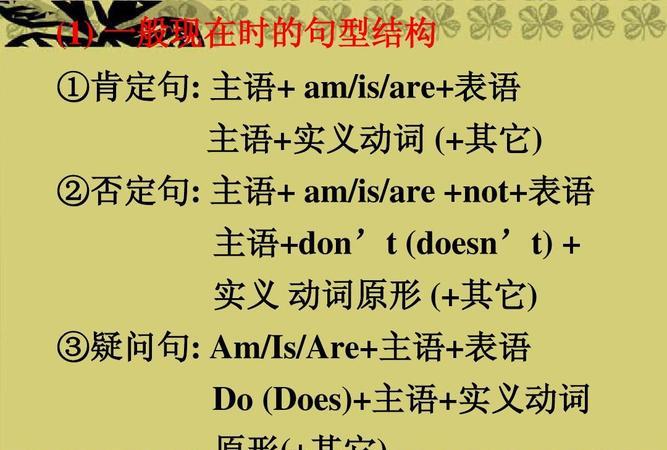实义动词变否定句时,通常在动词前加“not”,如“am not”、“does not”和“will not”。但有些动词会有变化,如“be”动词和助动词“have”、“will”。主语通常不变,但第三人称单数时,动词后要加“-s/-es/-ies”。否定词“not”通常在动词前,但有时会在句中或句尾。

例如:
- I am not hungry.(我不饿)
- He does not like coffee.(他不喜欢咖啡)
- They will not come to the party.(他们不会来参加派对)
在变成否定句时,需要注意以下几点:
1. 动词变化
对于大多数实义动词,其否定形式是在动词前加上“not”,例如上述例句中的“am not”、“does not”和“will not”。但有些动词在否定形式中会有变化,例如:
- be动词(am/is/are/was/were)的否定形式是在动词前加上“not”,但在口语中通常会缩写成“is not”→“isn't”、“are not”→“aren't”等。
- 助动词have的否定形式是在动词前加上“not”,但缩写时会变成“haven't”(have not)。
- 助动词will的否定形式是在动词前加上“not”,但缩写时会变成“won't”(will not)。
2. 主语变化
在否定句中,主语通常不会有变化。例如上述例句中的“I”、“He”和“They”都没有变化。但当主语是第三人称单数(he/she/it)时,要在动词后加上“-s/-es/-ies”等变化形式,例如:
- She does not like coffee.(她不喜欢咖啡)
- The cat does not like water.(这只猫不喜欢水)
3. 句型变化
在否定句中,动词通常是在主语后面,否定词“not”则在动词前面。例如:
- I am not hungry.(我不饿)
- He does not like coffee.(他不喜欢咖啡)
- They will not come to the party.(他们不会来参加派对)
但在某些情况下,否定词“not”会放在句子中间或末尾。例如:
- I do not, in fact, like coffee.(事实上,我不喜欢咖啡)
- He likes coffee, but not tea.(他喜欢咖啡,但不喜欢茶)
- They came to the party, not because they wanted to, but because they had to.(他们来参加派对,不是因为他们想来,而是因为他们不得不来)

